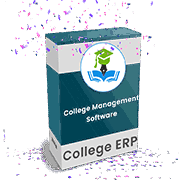What Is University Management System?
A University Management System (UMS) is a comprehensive software solution that automates and optimizes the different administrative duties associated with running a university. It provides a centralized platform for managing student information, course registration, faculty records, financial aid, and other critical activities. With the ever-increasing complexities and demands of higher education institutions, UMS has become an essential instrument for efficient and successful management.
It improves the overall operation of a university by automating laborious operations, reducing paperwork, and increasing data accuracy. One of the key advantages of a UMS is its capacity to deliver real-time data and analytics, allowing university administrators to make educated decisions and track the performance of different departments. It also improves communication among students, instructors, and staff, leading to a more collaborative and engaging learning environment.
Some important aspects to look for in a UMS are academic planning, online course delivery, grading and transcripts, student information management, and financial assistance administration. In addition, many systems include modules for library management, human resources, and alumni connections. When evaluating a UMS, be sure it can interact with existing systems and adapt to your university's specific needs.
Scalability, ease of usage, and security are all important issues to consider. Investing in a UMS can provide various benefits to a university, including cost savings, increased productivity, and a better student experience. It also enables colleges to stay current with technological advances and remain competitive in the ever-changing world of higher education. So, for colleges searching for a comprehensive solution to manage their many operations seamlessly, a UMS is an excellent investment.
What Are The Recent Trends In University Management System?
Universities are continually evolving to meet the changing demands of students, professors, and staff. Traditional university management systems are being replaced by more complex and comprehensive solutions as the focus shifts toward efficiency, transparency, and data-driven decision making.
Let's explore, we will look at current trends in university management systems that purchasers should consider before making a purchase.
1. Cloud-Based Solutions: One of the most significant trends in university administration systems is the transition to cloud-based solutions. These systems provide various advantages, including remote access, scalability, and cost-efficiency. With a cloud-based solution, institutions can save money on IT infrastructure, boost cooperation, and have more control over system upgrades and maintenance.
2. Mobile Accessibility: Another notable trend in university management systems is a focus on mobile accessibility. Students and staff increasingly rely on mobile devices for communication and information, therefore university management systems must have a mobile-friendly interface. This makes it easier to obtain key information like grades, schedules, and announcements at any time and from any location.
3. Data Analytics: Data has emerged as a critical component of university decision-making. As a result, university management systems increasingly include extensive data analytics capabilities, enabling administrators to collect and analyze data in order to make educated decisions. This trend allows colleges to improve student results, identify areas for development, and better manage resources.
4. Integration With LMS: Learning Management Systems (LMS) have become an essential component of universities, and there is an increasing trend of integrating LMS with university management systems. This integration allows for smooth communication between systems, avoids data duplication, and increases overall efficiency. With LMS integration, colleges can better track student progress, course enrollment, and overall learning experience.
5. Automation: In today's fast-paced world, automation has become essential for universities. With an increasing number of tasks and processes to manage, universities are implementing university management systems with automation features. These systems can automate a variety of administrative duties, including admissions, registration, and fee collecting, freeing up crucial time for employees to focus on more important obligations.
Benefits Of Using University Management System
A University Management System (UMS) is a software solution created expressly to satisfy the administrative and academic needs of educational institutions. This comprehensive platform includes a variety of modules to expedite procedures and improve university management.
Here are some significant advantages of employing a University Management System for your institution:
1. Centralized Data Management: By storing all data in a single location, UMS reduces the need for human paperwork and repeated data entries, lowering the risk of errors and maintaining data consistency. This also enables authorized staff to view and change information in real time, hence increasing efficiency and information sharing.
2. Efficient Admissions Process: The UMS has an online admissions system that streamlines the application process for potential students. This not only saves time and effort, but also delivers a consistent experience for candidates, raising enrollment and student satisfaction rates.
3. Improved Communication: UMS promotes good communication among many stakeholders, such as students, professors, and administration. Automated alerts, messages, and announcements provide quick and timely communication, resulting in improved coordination and a more connected campus community.
4. Streamlined Academic Management: The UMS provides a range of capabilities for managing academic procedures, including scheduling and course planning, as well as attendance tracking and grading. This reduces the workload of faculty members and allows them to concentrate on providing great education.
5. Improved Resource Management: From classroom and facility management to inventory and financial tracking, UMS delivers solutions to maximize resource utilization. This lowers waste and saves money while also improving the university's overall operations.
6. Robust Reporting And Analytics: UMS generates extensive reports and conducts data analysis to assist administrators in making educated decisions. This essential information helps identify areas for growth, track progress, and ensure the institution's success.
7. Secure And Scalable: UMS includes robust security protocols to protect sensitive data and prevent unauthorized access. Furthermore, the system is scalable, allowing it to expand alongside the institution and respond to changing requirements.
Important Factors To Consider While Purchasing University Management System?
Introduction: A university management system is an essential tool for higher education organizations looking to streamline their administrative processes and operations. With the growing demand for efficient systems in the education industry, there are various options on the market for obtaining a university management system. However, not all systems are made equal, so it is critical to evaluate a variety of criteria before making a purchase.
Let's explore, we will go over the main elements to consider when selecting a university administration system.
1. Customization And Scalability: Customization and scalability are essential considerations when selecting a university administration system. Each institution has distinct demands and requirements, and the management system should be adaptable to fulfill those needs. It should also be scalable to support the institution's future expansion, with the ability to add new features and modules as needed.
2. User-Friendly Interface: The management system's user interface should be intuitive and easy to use. It should be simple to access, understand, and utilize for both administrators and end users. A complex and confusing system might cause user resistance, reducing the system's adoption and efficacy.
3. Integration Capabilities: The university management system should be compatible with other software and systems utilized by the institution. This comprises the student information system, learning management system, accounting software, and so on. This connection can help save time, eliminate errors, and provide a comprehensive perspective of the institution's activities.
4. Data Security: With sensitive information such as student records, financial data, and academic records kept in the management system, data security is an important consideration. The system should have safeguards in place to prevent data breaches, unlawful access, and loss.
5. Support And Training: A reputable vendor should offer extensive training and support for the university administration system. The training should be tailored to the institution's needs, and the vendor should provide continuous support to resolve any issues or questions that may emerge.
6. Pricing And ROI: The management system should be within your institution's budget while also providing a decent return on investment (ROI). Consider the cost of deployment, ongoing maintenance, and any additional expenses for upgrades or support. It is also critical to estimate the possible cost savings and benefits that the system will provide to your organization.
What Are The Key Features To Look For In University Management System?
A university management system (UMS) is a vital software tool for higher education institutions. It simplifies and automates a variety of administrative and academic activities, allowing for more efficient and effective management of the university operations.
When considering investing in a UMS, the following are the important qualities to look for:
1. Student Management: A UMS should have extensive student management capabilities, including the ability to store and organize student data, manage admissions and registrations, and track academic progress and performance.
2. Course Management: The system should include tools for creating, scheduling, and enrolling courses, as well as the ability to set class quotas and manage course prerequisites.
3. Financial Management: A full UMS should include capabilities for managing a university's financial aspects, such as student billing, fee collecting, financial assistance management, and budgeting.
4. Communication And Collaboration: Look for a system that has communication and collaboration features like email, chat, discussion forums, and file sharing. It should be able to integrate with the university's existing communication tools.
5. Faculty Management: The UMS should provide tools for managing faculty data, monitoring performance and workload, assigning courses, and managing attendance and leave.
6. Reporting and Analytics: A UMS should include reporting and analytics features that allow you to generate real-time statistics on student enrollment, course success, faculty workload, and financial status.
7. Mobile Accessibility: As more people use mobile devices, a UMS with a mobile app is a useful feature. It enables instructors, students, and administrators to use the system on the go, making it more convenient and adaptable.
8. Customizability: Because each university has distinct requirements, a UMS should be adaptable, allowing you to modify it to your institution's specific demands.
9. User-Friendly Interface: A UMS's interface should be intuitive and simple to use for both administrators and end users.
10. Customer Support: Finally, select a UMS supplier that provides dependable customer support, such as technical assistance, training, and continuous maintenance.
Why Do Businesses Need University Management System?
A University Management System (UMS) is a vital tool for education-related enterprises. It is a comprehensive software system that streamlines and automates administrative, academic, and financial procedures at universities, colleges, and other educational institutions. One of the main reasons firms use a UMS is to increase efficiency and productivity.
A UMS allows you to execute duties like student enrollment, course registration, and fee collection fast and accurately. This not only saves time and effort, but it also minimizes the likelihood of errors and delays, resulting in increased production for the company. Data management and integration are also important considerations. A UMS enables the centralization and management of diverse academic and administrative data, such as student records, course information, financial records, and more.
This simplifies business data access and analysis, resulting in better decision-making and strategic planning. Furthermore, a UMS includes elements like online learning and virtual classrooms, which are vital in today's digital world. This enables organizations to provide their students with flexible learning opportunities, providing continuing education even in the face of unforeseen situations.
A UMS also helps firms achieve regulatory compliance. It can generate reports, track attendance, and handle accreditation processes, making it easier for firms to meet regulatory requirements. Last but not least, a UMS can enhance communication and collaboration within the organization. Online portals and messaging systems enable students, instructors, and staff to stay connected and informed, resulting in a better learning and working environment.
How Much Time Is Required To Implement University Management System?
The installation time for a University Management System (UMS) varies depending on various factors, including the institution's size, existing systems, and customized requirements. However, properly implementing a UMS can take anywhere between 6 months and a year. The first stage in adopting a UMS is assessing the university's specific needs and goals. This includes reviewing the present procedures and identifying areas for improvement.
To guarantee that everyone's requirements are met, all stakeholders, including faculty, staff, and students, must be involved in this process. Next, the institution must select a reputable UMS vendor who can supply a solution that matches their specific needs. This process could take a few weeks to a couple of months, depending on the complexity of the university's requirements and the effectiveness of the vendor selection process.
After selecting a vendor, the implementation procedure begins. This includes installing, configuring, and modifying the UMS software to meet the university's specific requirements. This phase normally takes the longest, ranging from 3 to 6 months, depending on the level of personalization required. After the system has been properly configured and personalized, it is time to test and train.
To guarantee a smooth transition, this step includes testing the system for problems and glitches, as well as giving extensive training to all users. This process can take anywhere between 2 and 3 months, depending on the size of the institution and the level of training necessary. Finally, the UMS is ready to launch and execute at the institution. However, it is important to remember that the implementation process is ongoing, and the system will require continual monitoring, review, and modifications to maintain its efficient operation and alignment with the university's changing demands.
What Is The Level Of Customization Available In University Management System?
University management systems are extremely sophisticated software applications that streamline and automate many administrative and academic operations in institutions. One important feature of these systems is their level of customization, which refers to the ability to adapt and tailor the system to match the unique demands and requirements of a single institution. The level of customisation varies depending on the provider and the individual capabilities available.
Most university management systems, however, provide a great degree of flexibility and adaptation to meet each university's specific demands. The customizing process often begins with a detailed examination of the university's existing processes and systems. This enables the supplier to better understand the institution's specific needs and expectations, as well as identify any gaps or opportunities for development.
Once the analysis is completed, the provider will collaborate with the university to develop and deploy a customized solution. This can include tailoring the system's user interface, data fields, and workflows to match the university's current processes and policies. Furthermore, the system can be connected with other software or tools used by the university to ensure smooth functioning and data sharing.
Another essential part of customisation is the flexibility to add or delete features based on the university's unique requirements. For example, a university that provides online courses may require extensive learning management system (LMS) integration, but a smaller school may only require basic capabilities such as enrollment and grading. Furthermore, many university administration systems have the ability to create and add new features that are specific to the school. This is especially valuable for colleges with unique programs or processes that necessitate customized solutions.
Which Industries Can Benefit The Most From University Management System?
Universities and educational institutions are continuously working to improve their operations and provide a consistent experience for their students and faculty. This is where the University Management System (UMS) comes into play. A UMS is a software solution that streamlines and automates different administrative operations at a university or college. While colleges are the most frequent users of UMS, other industries can also profit from its features and capabilities.
The following industries can benefit the most from a UMS:
1. Education Industry: It is unsurprising that the education industry benefits the most from UMS. Universities and colleges can considerably benefit from a UMS as their student population grows and the complexity of managing academic and administrative operations increases. It aids in the administration of many tasks such as entrance, enrollment, course management, attendance tracking, and grading, to name a few.
2. Healthcare Industry: UMS has also been recognized as a valuable tool for improving healthcare operations. With the growing demand for healthcare workers and the necessity for ongoing education and training, hospitals and clinics can utilize UMS to manage their employees' training and certifications while also tracking their development and performance.
3. Corporate Training: Many firms offer training and development programs to help their staff improve their skills and expertise. A UMS can be a valuable tool for efficiently managing these programs and tracking employee development and certifications.
4. Government Institutions: UMS can assist government institutions such as schools, colleges, and universities. These schools manage a huge number of students and teachers, and a UMS can assist streamline and improve their processes.
5. Non-Profit Organizations: Non-profit organizations that provide educational programs and services can use a UMS to manage their operations. It can manage registration, attendance, and other administrative responsibilities, freeing these groups to concentrate on their primary objective.
Conclusion
To summarize, investing in a university administration system is a wise move for any educational institution aiming to boost efficiency, communication, and overall student experience. A university management system, which includes features such as student information management, course scheduling, and online learning capabilities, can expedite operations and improve the learning environment for students and teachers alike.
When deciding which university management system is best for your school, you need carefully assess your individual needs and goals. Look for a system that is easy to use, adaptable, and interacts seamlessly with your existing systems. Consider the quality of customer support and training provided by the company to guarantee a smooth transition and continuous assistance.
It is also vital to consider the long-term advantages and ROI of installing a university administration system. By automating processes and boosting communication, the institution can save time and resources while also improving students' academic experiences. Furthermore, as technology advances and becomes more integrated into the educational landscape, having a strong university management system in place can help your school prepare for future growth and adaption.
Stay ahead of the curve by investing in a system that can handle your current demands while also evolving with your institution. Overall, the correct university administration system can significantly improve your institution's success and efficiency. Take the time to thoroughly investigate and compare several possibilities to find the greatest fit for your requirements. With the correct infrastructure in place, your organization can thrive in the ever-changing digital world.





















